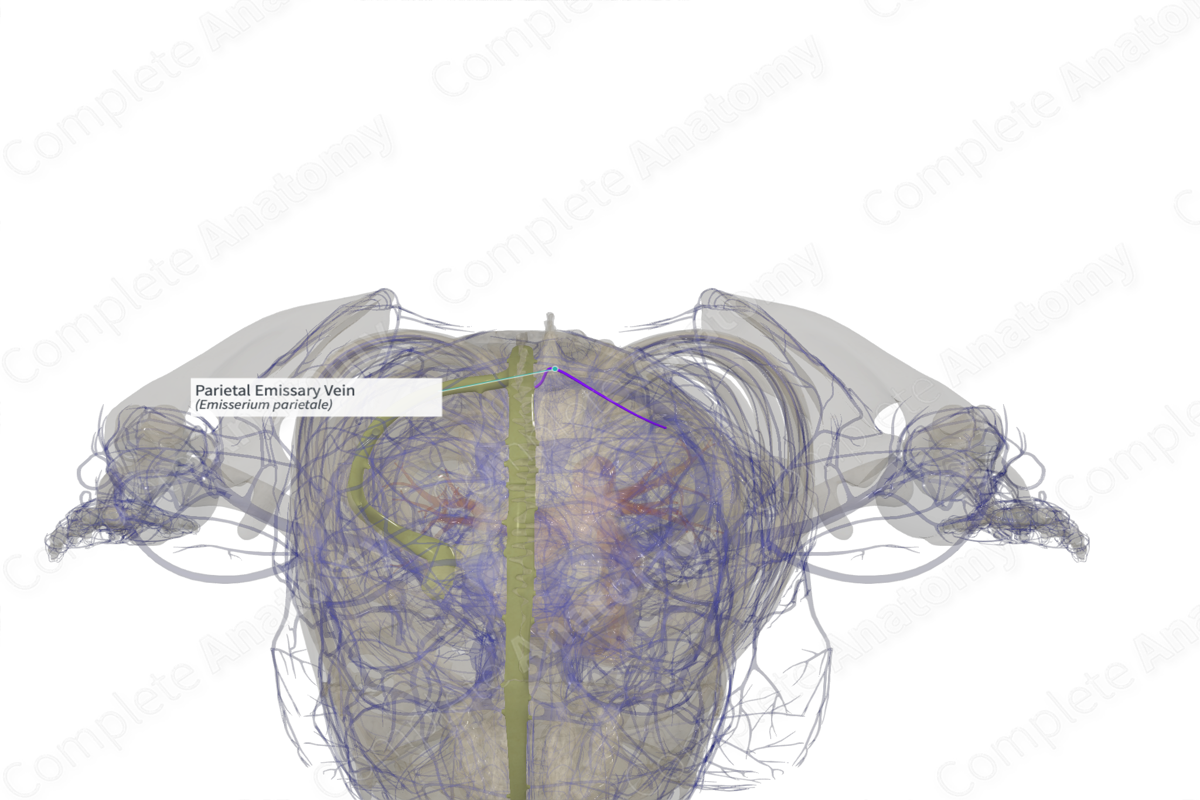
Quick Facts
Origin: Superficial temporal veins of the scalp.
Course: Pass through the small parietal foramen of the skull.
Tributaries: None.
Drainage: Scalp of parietal region.
Related parts of the anatomy
Origin
The parietal emissary veins arise from the superficial temporal vein, or other superficial veins of the scalp.
Course
The parietal emissary veins pass superiorly along the external surface of the parietal bone. They then pass through small foramina in the parietal bone, one on either side of the midline of the skull, to enter the cranial cavity and subsequently drain into the superior sagittal sinus (Tubbs, Shoja and Loukas, 2016).
Tributaries
The parietal emissary veins have no named tributaries, but they may interact with diploid veins.
Structures Drained
The parietal emissary veins drain the parietal scalp into the superior sagittal sinus. However, one must be aware of the fact that emissary veins are valveless channels and hence, the blood can flow in either direction.
References
Tubbs, R. S., Shoja, M. M. and Loukas, M. (2016) Bergman's Comprehensive Encyclopedia of Human Anatomic Variation. Wiley.
Learn more about this topic from other Elsevier products





